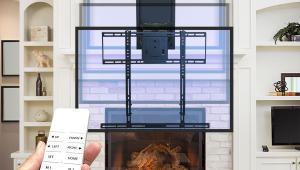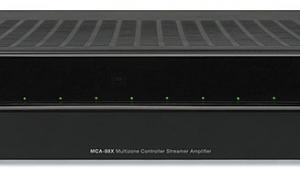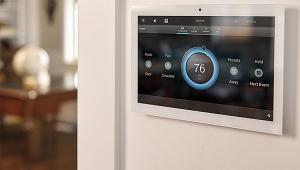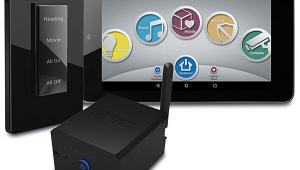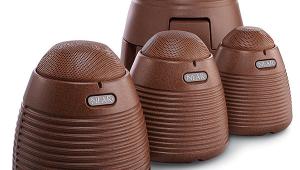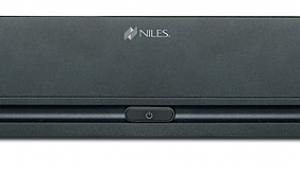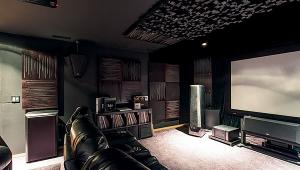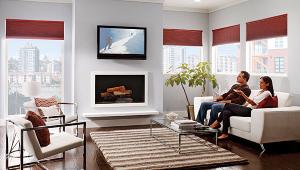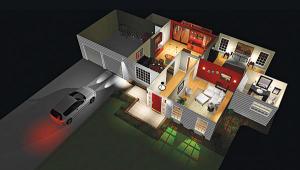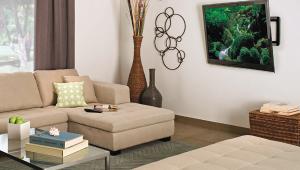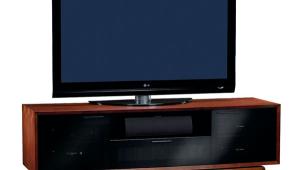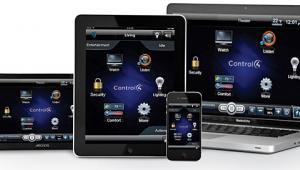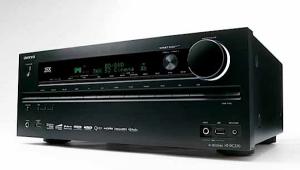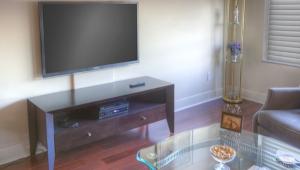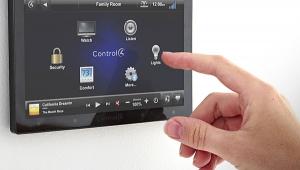TiO Home Automation System Page 2
TiO’s Mode of Moods
After understanding Elements, the next important TiO concept is a Space, which is any area in the home that’s controlled by a TiO Element. (If you say, “Oh, you mean a zone!,” I’m going to slap you.) A home can have lots of Spaces of varying sizes, including part of a room, a whole room, multiple rooms, the entire house, and an outside landscaped area. Spaces with AZSS1 streamers can be cloned, so they always operate in unison, or shadowed, so the audio source is the same but the volume can be adjusted independently. After the hardware has been installed, named, and assigned to its Space during configuration using the Pro TiO Home App, the installer—or, more importantly, the homeowner—can then begin to create Moods.

In essence, a Mood is a snapshot of the status of every device or gadget that TiO controls in a particular Space, including lighting, audio source, volume, and third-party A/V gear, as well as thermostat settings. Much like taking a picture, all the status settings are captured by pressing the TiO Capture Mood button icon that appears on every screen of the TiO Home App (Pro or standard version). Then you name the Mood, select which Elements are to be included, and (if desired) schedule it for specific times or events, such as sunrise and sunset. Moods can be created, recalled, or edited at any time by the installer—or, more interestingly, by the homeowner after the installer is long gone—and they can be assigned to buttons on TL4s. Conveniently, each time a Space is created in the TiO system during setup, the system automatically generates a “Space Off” Mood for shutting off everything in that Space.
A TiO Experience is a selection of Moods in different Spaces that are activated simultaneously. As with Moods, Experiences can be created, recalled, or edited at any time— again, by the installer or homeowner. Creating an Experience is done by pressing the (surprise!) Create Experience icon that’s also on every screen in the TiO Home App. Then you simply drag and drop existing Moods into the Experience’s list. Party and Goodnight are two obvious examples of useful Experiences that would provide easy control over most, or all, of your home. Vacation Experience might include Moods with scheduled lighting or audio activities to make it seem like someone is at home.
It Ain’t Easy Being Easy
The TiO Home App was simple to navigate without being too simplistic, and it offered a high degree of customization without being overly confusing. That’s not an easy thing to accomplish in an app, either. Once you’ve chosen the Space you want to control from the home screen, a scrolling arc of circles becomes available. The circles contain icons for the different Elements and Moods that are already part of the system. The Elements and Moods appropriate for that Space are colored in, while the unavailable ones are grayed out. It’s not quite a warm and fuzzy user interface, but it’s much friendlier and more approachable for a lot of folks than a higher-tech, more Star Trek-ish/Star Wars-ian layout would be.
I really liked the TiO Home App overall, but that doesn’t mean it was perfect. For instance, although the app will recognize existing playlists on connected drives, NAS devices, and network servers, you can’t create playlists on the fly from within the app. [Ed. Note: TiO said at press time that playlist functionality will be released by the fall.—RS] And to put it mildly, I’m not a fan of the app’s text-based, folder/subfolder style of selecting music (which, for example, requires you to take a path like Synology BC214se/Music/By Album Artist/Adele/21/Rolling in the Deep). It’s a far more natural experience to choose music from an array of cover art icons, the way Mirage and Plex, for example, allow you to do. TiO is hardly alone in using this method, but it’s the very first thing I’d change about the app. It would also be helpful if the app would present the available music as a single library, rather than make you choose the individual server that a song is on. Strangely, there was no obvious way in my system to fast-forward or rewind a song in the app, either. (TiO’s documentation for the app under “Audio Controls” says, “Depending on your music source, you may have access to these control options: Rewind, Pause, Fast Forward, Repeat, and Shuffle.”)
Balls in Your Walls
Hardware-wise, I can’t say enough about how awesome the two AZSS1s were in this system. That streamer/integrated amp is a marvelous device (um, Element), packing so many features and so much power into one small chassis that it’s hard to believe it works. But it does work—and very well, too.
The auto sensing digital audio input worked like magic, switching to that input and back to the streaming section each time I power-cycled the Oppo BDP-105 player connected to it. StreamSharing is TiO-talk for streaming audio from one AZSS1 to others in the system while maintaining the audio in perfect sync across Spaces, and it worked precisely as promised. Interestingly, the AZSS1 also let me share audio from the Oppo, but there was a delay in the second AZSS1’s audio.
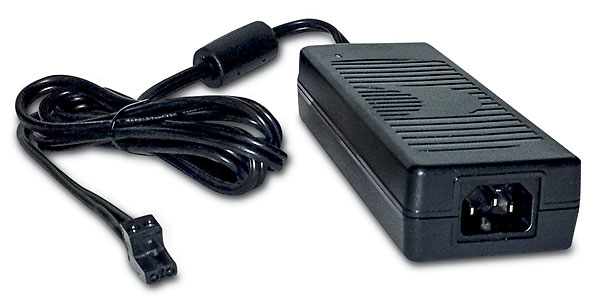
I have to admit that I really didn’t expect much from the AZSS1’s built-in 50-watt x 2 Class D amp. After all, it’s designed to fit into a single-gang electrical box. How good could it be? Well, it turns out that if you do get a couple of these AZSS1s installed, you’ll have some real balls hidden behind your walls. The amp not only plays powerfully and cleanly but also sounds open without any edginess in the high end. While I was working on this review, I had Paradigm’s excellent Play-Fi-enabled streamer, the PW Amp, along with the company’s phenomenal Prestige 75F towers, so I was able to spend time comparing the two amps playing the same speakers. The PW Amp is a damn impressive amp in its own right, but I must say that I was floored to hear the AZSS1 give it a close run for its money (in Canadian dollars, of course). The differences were small, and some variables were difficult to account for, but overall I thought the AZSS1 had a bit more punch in the bass region, while the PW Amp provided slightly more depth in the imaging.
From a lighting-control standpoint, the TL4s were rock-solid and responsive— consistently faster to react, I have to say, than a lot of Z-Wave- and ZigBee-based lighting systems I’ve worked with. The fact that the TL4 can handle so many different types of loads and do so simultaneously on the same circuit is something for installers to admire, but I fell in love with the design of the TL4’s capacitance touchpanel. It’s sleek without calling attention to itself, and, well, it just worked—even when I was wearing gloves, which is especially important for TL4s used at front or back doors or in garages. It was incredibly easy to reconfigure the TL4, too, including the backlighting, number of buttons, button function assignments, and even the ramp rate and min/max levels for TL4s used as dimmers. Unless your home is a museum, the way you live in it is going to change over time, and there’s no way to predict those changes when a home automation system is first installed. Providing an easy way for the homeowner to adapt the system’s operation to those changes is by far one of a TiO system’s most compelling features.
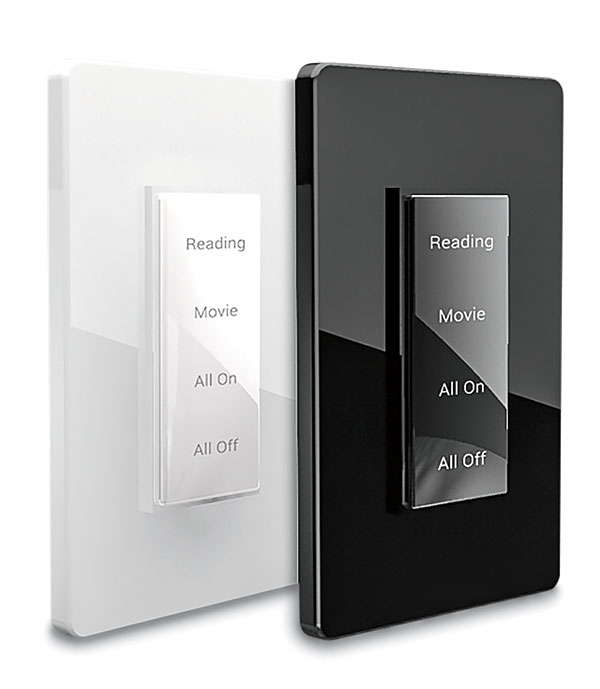
Although neither is a fatal flaw, by any means, there are two potential issues that might crop up as a result of the TL4 being TiO’s only in-wall lighting control Element. (TiO also makes a $180 touchscreen-less, plug-in, load-agnostic lamp dimmer, the LMPNA.) The first issue is the TL4’s 600-watt maximum incandescent load. While that’s likely not going to pose a problem for most people, especially with the prevalence of LED lighting today, it still might not be stout enough for some fixtures, such as large chandeliers or extremely vain vanity-mirror lighting. Fortunately, TiO says the TL4 supports a booster that can control loads up to 2,000 watts if needed.
The other possible negative is that, at $180, the TL4 is a bit expensive to use as a wireless light switch for, say, a basement or garage light where all you need is remote on/off control. (TiO recently announced plans for a “low-cost, three-way” switch as part of a future update.)
Last, TiO’s Elements for A/V and other home device control worked very well. In my case, the TCWiFi and its IR output adapter (TIR3, $30) consistently functioned as programmed with a basic AVR, BD, and HDTV system. TiO’s IR driver library didn’t seem as extensive to me as some of its competitors, though that can be overcome in time; the company currently uses the Global Cache IR library that has more than 150,000 codes in it. Also, direct IP control of some select IP-enabled devices (Nest, cameras, garage door openers) was only added after my review period, though the list of controlled devices is said to be expanding. That’s good, because IP control is more reliable than IR for automation. So TiO is on the right track.
Conclusion
Recommending a home automation system isn’t as simple as giving a thumbs-up to an AVR or an HDTV, because home automation isn’t something you can easily return to the store or trade up for something better. Home automation gear becomes part of your home, and you can’t transfer the programming from one company’s system to a competitor’s. Unless you’re buying a $50 smarthome hub and you have lots of free nights and weekends to tinker, you should definitely take your time deciding on the best system for you.
So here’s the thing: I think TiO has hit a towering home run (pardon the install-related pun) with the company’s new home automation ecosystem. It’s perfect for small- and medium-sized homes—especially those in which music (streaming or local) and A/V control are of high importance. TiO has absolutely succeeded in making the system both easy to operate and easy to customize. The AZSS1 and the TL4 are unique and cleverly designed, with a bundle of functions that, hard to believe, are all in one product. In case you can’t tell, I really like what TiO has done. Of course, there are some things I would change, mostly dealing with the app, but nothing egregious. Other automation systems, such as those from Control4, will provide more extensive options for many homeowners. On the other hand, there are quite a few situations in which a modest TiO system will do more and do it for less money—both up front and in the future. Without any doubt in my mind, TiO’s approach to home automation and its impressive ecosystem make this a system highly worthy of consideration.
- Log in or register to post comments
